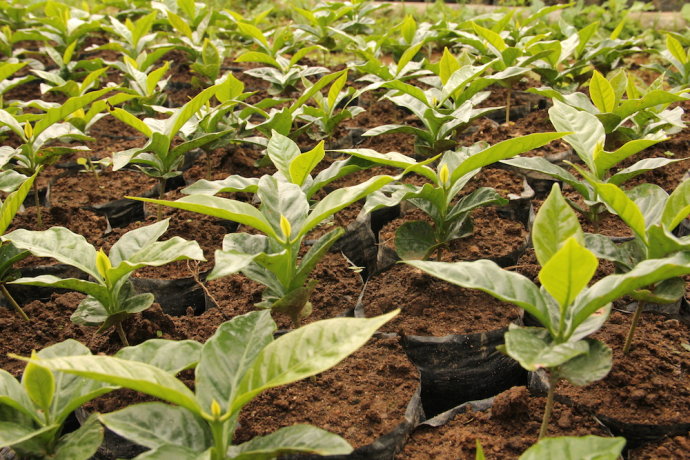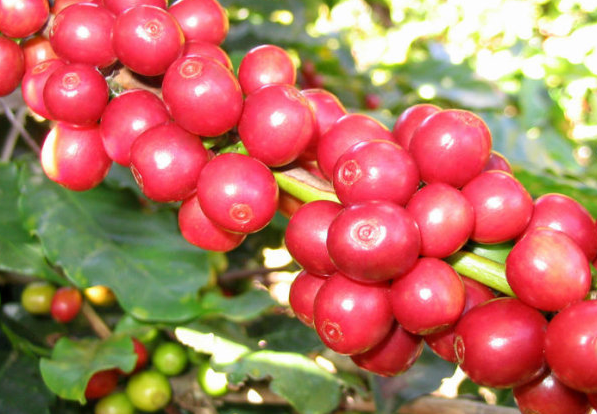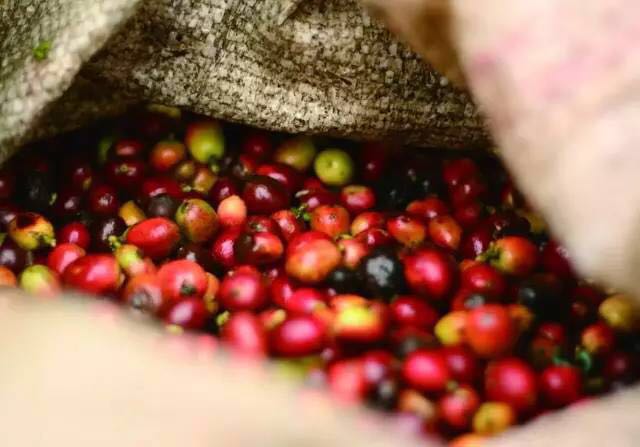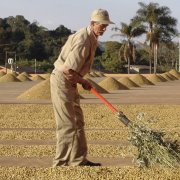Red Cherry Program improves coffee quality-Limu Kossa Cooperative Introduction
For professional baristas, please follow the coffee workshop (Wechat official account cafe_style)

Ethiopian red cherry (Operation Cherry Red)-Limkosa (Limu Kossa) sun-dried beans
Ethiopia is the country where coffee was first discovered. Today, there is still a lot of wild coffee picked and used by farmers in the virgin forest. Ethiopia is a country with poverty, drought and civil war. However, it is still the most important coffee producer in terms of coffee quality and output. Ethiopian coffee can be divided into two treatments. Natural washing treatment II. Natural sun treatment. Nowadays, every producing area, cooperative and even a small coffee farm in Ethiopia produces coffee beans of the above two treatments at the same time, whether it is the well-known Yegashifi producing area in Taiwan or the Sidamo province. For the coffee beans washed with water, the aroma temperature and low temperature are low, the citric acid is soft and low-key, the consistency of flavor is high, while the coffee beans with sun-drying method, the aroma is strong and conspicuous, the weakness of citric acid is not obvious, and the complex and changeable flavor is dominated by flower or fruit fragrance.
Ethiopia is currently the country with the fastest production and development of coffee. Different producing areas not only make coffee different in terms of treatment, but also make aroma and taste different due to different processing methods, which often give people the wrong impression. The aroma of Yejiaxuefei is different from that of Sidamo. Yega Xuefei has a higher moisture content of sun beans, coffee beans are mostly small, the aroma is low and stable, and the taste is thicker. The strong strawberry aroma of the sun beans in Sidamo is impressive, but the taste is thin.

In recent years, many emerging small producing areas or cooperatives in the Sidamo producing area of Ethiopia will sell in the market under the name of their own cooperatives, which shows confidence in their own coffee. I hope to build brand reputation and loyalty in the coffee market. Coffee farmers insist on picking mature coffee beans and strictly handle every process. Both natural washing and natural sun drying show unexpected fragrance and excellent taste, which I think is why Ethiopian coffee is expected by coffee fans every year.
Before 2007, most coffee fans were talking about the strong sour and fruity flavor of Kenyan beans, and also mockingly said that the fresh flowers and plants of Ethiopian coffee were gone. in fact, a few years ago, European raw bean manufacturers have found that Ethiopian coffee has deviated from the direction of "high yield and poor quality" because of the imbalance between supply and demand. So in 2005, the Red Cherry Project (Operation Cherry Red), assisted by the Dutch government, began to select small coffee cooperatives at high elevations in the three regions of Sidamo, Yegashifi and Lim. Improve the planting knowledge of coffee farmers, harvest fully ripe coffee fruits (which is why they are named red cherries), and improve coffee processing techniques. two。 The new processing and drying equipment for coffee beans was funded by the Dutch government. In order to produce high-quality coffee beans, these coffee beans have to be tested by the Red Cherry Program before they are dried and bagged. Only coffee beans with a score of more than 84 can get a good purchase price under the name of the Red Cherry Project (Operation Cherry Red). This is a raw bean price that can be plentiful and guaranteed for the local community because of the production of high-quality coffee, and further improve home and community life. Consumers can also rest assured to buy the most floral or fruity Ethiopian coffee. Krett in 2008 has regained coffee fans' confidence in Ethiopian coffee, the aroma of strawberry cookies is impressive, and the coffee beans of the 2009 Red Cherry Project are ready for a variety of flower and fruit aromas to share with you the fruits of these efforts.
Red Cherry Project-Lim Cosa (Limu Kossa) is a high quality G3 sun bean, and generally G4 sun bean.

Limu Kossa, Ethiopia, is an alpine coffee cooperative located at 1700-2000 meters above sea level. The best annual output of coffee beans is 3000 kg (about 50 bags), because only high-quality coffee can be favored by the red cherry program. Because there are very few defective beans after selection, raw beans have a layer of olive green in yellowish brown, and holding raw beans has a delicate aroma of fruit wine. The special floral aroma is completely different from the sun Sidamo (Crete) and Sun Yega (Mist Manor). It has a pink taste in the front and slowly raises the strawberry aroma in the back.
Shallow baking City (fragrance): unlike ordinary coffee beans, the aroma will gradually decrease with time after grinding beans. After 10 to 15 seconds, the aroma of strawberry biscuits becomes very strong and sufficient. The taste of imported pink and tender beans is not found in other East African beans. It is suggested that it can be divided into two drinks until the coffee is cooled and the aroma of strawberry wine fermentation begins to be complex and elastic (one circle is larger than the other) and the frequency is getting stronger and stronger. The coffee beans are properly nourished (stored) for 7 to 9 days, so that the transformation of the aroma to the fullest fruit acid becomes smooth and slow, and the aroma of strawberry brewed in the sealed bag is slowly awakened from low to bright. Coffee beans grow from young teenagers to temperamental adults like life.
Re-baking (general C): this baking degree has the aroma of cocoa chocolate, the natural sweetness of hazelnut cake, the taste is pure and smooth, but clean and not thick without bitterness, and the chocolate is sweet, soft and round when the coffee is cooled.
Important Notice :
前街咖啡 FrontStreet Coffee has moved to new addredd:
FrontStreet Coffee Address: 315,Donghua East Road,GuangZhou
Tel:020 38364473
- Prev

Introduction to roasting of garden-grade coffee beans in Kathakwa, AA-, Kenya
For the exchange of professional baristas, please follow the coffee workshop (Wechat official account cafe_style) Kenya AA- Casico (Kathakwa) manor beans Kenya is a model country for producing fine coffee beans, Kenya produces high-altitude Arabica water beans is one of the world's top coffee beans, most coffee beans are graded by the Kenya Coffee Bureau and then sold at auction
- Next

Introduction to Kagomoini Manor, Kenya Coffee Manor, which must be visited by European bean merchants.
For the exchange of professional baristas, please follow the coffee workshop (Wechat official account cafe_style) Kenya AA- (Kagomoini) manor beans Kenya, the giant in the coffee market is also a model country for producing excellent coffee beans, the high-altitude Arabica natural water washing beans produced in Kenya are the top coffee beans in the world, and most of the coffee beans are imported by the Kenya Coffee Bureau.
Related
- Does Rose Summer choose Blue, Green or Red? Detailed explanation of Rose Summer Coffee plots and Classification in Panamanian Jade Manor
- What is the difference between the origin, producing area, processing plant, cooperative and manor of coffee beans?
- How fine does the espresso powder fit? how to grind the espresso?
- Sca coffee roasting degree color card coffee roasting degree 8 roasting color values what do you mean?
- The practice of lattes: how to make lattes at home
- Introduction to Indonesian Fine Coffee beans-- Java Coffee producing area of Indonesian Arabica Coffee
- How much will the flavor of light and medium roasted rose summer be expressed? What baking level is rose summer suitable for?
- Introduction to the characteristics of washing, sun-drying or wet-planing coffee commonly used in Mantenin, Indonesia
- Price characteristics of Arabica Coffee Bean Starbucks introduction to Manning Coffee Bean Taste producing area Variety Manor
- What is the authentic Yega flavor? What are the flavor characteristics of the really excellent Yejasuffi coffee beans?

